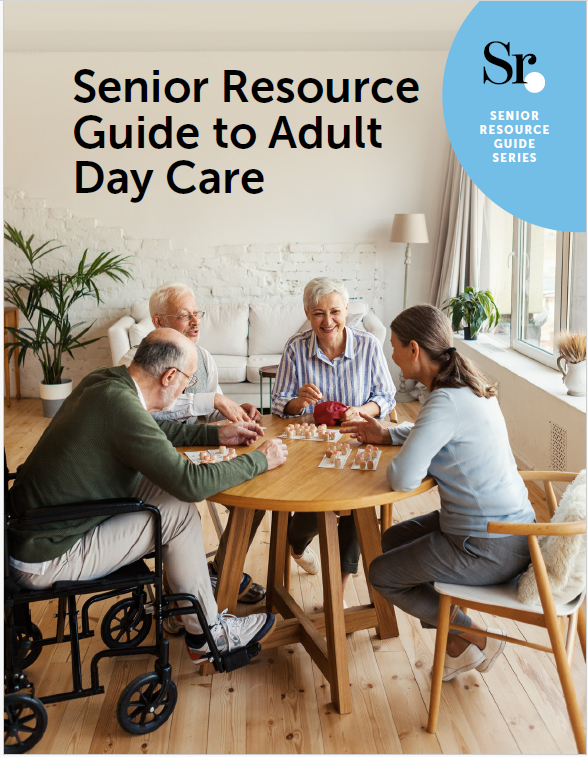What is Long-Term Care?

Long-term care is exactly what the name implies—ongoing care designed to help individuals with disabilities or chronic health conditions. This type of care encompasses a range of services that address personal and medical needs over an extended period. It’s not just about immediate treatment but ensuring sustained quality of life. But who needs long-term care? What are the costs? And what does long-term care include? Here’s what you need to know!
What Is Long-Term Care?

Long-term care refers to the services designed to help meet the personal care and health needs of individuals who can’t independently manage daily activities due to chronic illness or disabilities. Typically, services span months or even years and aim to support individuals in maintaining their quality of life and independence. In addition to personal care assistance, long-term care may also include medical and nursing care, rehabilitation services, respite care for caregivers, and specialized care for individuals with specific conditions, like Alzheimer’s or dementia.
Common long-term care services include:
Assistance with Daily Activities (ADLs)
- Bathing: Assistance with bathing, ensuring individuals are clean and comfortable.
- Dressing: Help with selecting appropriate clothing and getting dressed.
- Eating: Assistance with feeding, ensuring proper nutrition and hydration.
- Toileting: Aid with using the toilet and maintaining personal hygiene.
- Mobility: Assistance with walking, transferring from bed to chair, or using mobility aids.
Instrumental Activities of Daily Living (IADLs)
- Meal Preparation: Assistance with meal planning, cooking, and feeding, if necessary.
- Housekeeping: Help with light housekeeping tasks like cleaning, laundry, and tidying up.
- Managing Finances: Assistance with budgeting, paying bills, and managing financial affairs.
- Medication Management: Ensuring individuals take medications as prescribed, including dosage management and medication reminders.
- Transportation: Assistance with arranging transportation for medical appointments, grocery shopping, and other essential errands.
Medical Care
- Medication Administration: Administering medications, including injections or intravenous therapies, as prescribed by healthcare providers.
- Wound Care: Dressing changes, wound cleaning, and monitoring for signs of infection.
- Chronic Disease Management: Monitoring and managing chronic conditions such as diabetes, hypertension, or heart disease.
- Therapies: Physical therapy, occupational therapy, speech therapy, and other rehabilitative services to improve mobility, function, and communication.
- Medical Equipment Management: Assistance with using and maintaining medical equipment such as wheelchairs, walkers, or ventilators.
Emotional and Social Support
- Companionship: Providing emotional support and companionship through conversation, activities, and social engagement.
- Counseling: Offering counseling or therapy services to address emotional, psychological, or behavioral issues.
- Support Groups: Connecting individuals with support groups or community resources for peer support and encouragement.
- Respite Care: Providing temporary relief for family caregivers, allowing them time for rest and self-care.
Types of Long-Term Care

When people think “long-term care”, what might come to mind are nursing homes, assisted living facilities, and hospitals. However, long-term care doesn’t refer to a specific place! In fact, long-term care can be administered in a variety of places—including the patient’s home. Keep reading to learn more about the difference between home-based and facility-based care.
A. Home-Based Care
Home-based care is exactly how it sounds—long-term care that’s applied in a patient’s home! This type of care allows individuals to remain in familiar surroundings while receiving the help they need. Here are some key aspects of home-based care:
- Personalized Care: Care plans are tailored to meet the specific needs and preferences of each individual. Caregivers or healthcare professionals provide services ranging from assistance with activities of daily living (ADLs) to skilled nursing care, depending on the individual’s requirements.
- Comfort and Familiarity: Being in their own home can provide a sense of comfort, familiarity, and independence for patients. In addition to maintaining their daily routines, this can allow them to interact with family members and pets and have control over their environment.
- Flexibility: Home-based care offers flexibility in scheduling and services. Caregivers can adapt to changes in the individual’s condition or needs more easily, providing support as required throughout the day or night.
- Family Involvement: Family members often play a significant role in home-based care, providing emotional support, assistance with caregiving tasks, and coordination of services. Caregivers work closely with families to ensure continuity of care and address any concerns or questions.
- Services Provided: Home-based care services may include assistance with personal care (bathing, dressing, grooming), meal preparation, medication management, companionship, light housekeeping, transportation, and more.
B. Facility-Based Care
Facility-based care encompasses various long-term care options provided in specialized settings outside of the individual’s home. This includes assisted living facilities, nursing homes, memory care units, and other residential care facilities. Facility-based care offers a supportive environment where individuals can receive around-the-clock supervision, assistance with ADLs, and access to necessary medical services These facilities often provide amenities and services tailored to the specific needs of residents.
Find assisted living near you.
Who Provides Long-Term Care?

When it comes to long-term care, your next question may be: Who provides this type of care? We’ve got the answers for you!
Caregivers
Caregivers play a crucial role in providing long-term care services to individuals in need. These caregivers can include family members, friends, or hired professionals who offer physical, emotional, and sometimes financial support to care recipients. Family caregivers often assist with daily activities such as bathing, dressing, meal preparation, and transportation, while also offering companionship and emotional support. They may also handle medical tasks such as administering medication or coordinating doctor’s appointments.
In cases where family or friends are unable to provide the necessary care, individuals may opt to hire professional caregivers. These hired caregivers may include home health aides, personal care attendants, or certified nursing assistants. Professional caregivers can offer valuable support to both patients and their families, allowing family members to balance their caregiving responsibilities with other commitments.
Healthcare Professionals
Healthcare professionals play a vital role in managing the health and well-being of individuals who require long-term care services. From nurses to nurse practitioners to therapists to other specialists, these individuals work collaboratively to assess, plan, and deliver comprehensive care to patients.
In addition to nurses, other healthcare professionals such as physical therapists, occupational therapists, speech therapists, and social workers may be responsible for a patient’s care. By working together as a multidisciplinary team, healthcare professionals strive to improve the quality of life and overall well-being of a patient.
Cost of Care
According to Genworth, the median cost of in-home care across the United States is $6,006. The average cost of assisted living is around $5,350. Meanwhile, for nursing homes, the median cost of a semi-private room is $8,669, while a private room generally runs around $9,733.
Long-term care services can have significant financial implications. Fortunately, there are various payment options available to cover these costs!
Out-of-Pocket Payments
Many people choose to pay for long-term care services with their personal savings or assets. This can include retirement savings, investments, or proceeds from the sale of their home or commercial real estate. However, long-term care costs can quickly deplete savings, especially if care needs are extensive or prolonged.
Long-Term Care Insurance
Long-term care insurance is a specific type of insurance designed to cover the costs of long-term care services. Policies vary widely in terms of coverage, premiums, and eligibility criteria. Long-term care insurance can help mitigate the financial burden of care by providing reimbursement for services such as home care, assisted living, or nursing home care.
Read Next: 6 Alternatives To Long-Term Care Insurance
Medicaid
Medicaid is a joint federal and state program that provides health coverage to low-income individuals and families. As the largest payer of long-term care services in the United States, this program may cover a range of long-term care options. This may include nursing home care, home care, and assisted living, for eligible individuals with limited financial resources. However, it’s important to note that eligibility criteria for Medicaid vary from state to state.
Hybrid Life/LTC Insurance Policies
These policies combine long-term care coverage with life insurance or annuities. As such, they provide benefits for long-term care services if needed but also offer a death benefit or annuity payments to beneficiaries if the services aren’t needed.
Personal Care Agreements
Some families opt to establish personal care agreements, also known as caregiver contracts, to formalize arrangements for family members or friends who provide care to a loved one. These agreements outline the services to be provided and the compensation terms, which can help protect assets and guarantee fair compensation for caregivers.
Veterans Benefits
Veterans and their spouses may be eligible for long-term care benefits through the U.S. Department of Veterans Affairs (VA). This little-known benefit is called Aid and Attendance and is available to veterans who served at least 90 days, with at least one day during wartime. This pension can help cover the costs of nursing home care, assisted living, home care, and other services for eligible veterans. To qualify, a veteran must not have a net worth of more than $155,356 in 2024.
Does Medicare Cover Long-Term Care?
In short: No. However, Medicare may cover short-term skilled nursing care or rehabilitative services following a hospital stay.
How Can I Plan for Long-Term Care?

Long-term care isn’t a possibility that we like to consider, but it’s a reality many people might face. Creating an action plan for long-term care is important, and ensuring that you have the support and resources necessary to maintain your health and well-being is also critical. Here are a few ways that you can plan for the possibility of long-term care and prepare for the future in the past!
1. Assess your current situation.
Start by assessing your current health status, functional abilities, and potential long-term care needs. Consider factors such as chronic health conditions, cognitive abilities, and support networks.
2. Research long-term care options.
Explore the various long-term care options available. Research factors such as location, cost, services offered, staffing ratios, and quality ratings. And remember—if you don’t want to receive long-term care in a facility setting, you might not have to! Always look into home care as an alternative, too!
3. Evaluate your financial resources.
Now, it’s time to get serious. Consider your financial situation and develop a plan to cover the costs of long-term care services. Look into all your options, including Medicaid eligibility, long-term care, and veterans benefits. Additionally, make sure that you consult with a financial advisor or elder law attorney to explore all the resources and avenues available to you!
4. Create advance directives.
Draft advance directives, including a living will and healthcare proxy, to outline your medical care preferences and appoint a trusted individual to make healthcare decisions on your behalf. Make sure that your advance directives are legally valid and accessible to your healthcare providers and loved ones.
5. Communicate your care preferences.
Have open and honest conversations with your family members, close friends, and healthcare providers. Discuss topics such as preferred living arrangements, treatment options, and quality-of-life considerations.
6. Make a caregiving plan.
If you anticipate needing assistance with daily activities or medical care in the future, develop a caregiving plan that outlines who will provide care, what services will be needed, and how caregiving responsibilities will be managed. Weigh the pros and cons of family caregivers, respite care options, and professional caregiving services. Leave no stone unturned!
7. Engage in preventative care.
Preventative care is important! Be proactive about your health. Schedule regular check-ups with your healthcare providers, monitor chronic conditions, and address any changes in your health status sooner rather than later. Be vigilant! When it comes to your health, you can’t be too careful.
8. Review and update your plan.
Periodically review and update your long-term care plan to reflect changes in your health status, care needs, financial resources, or personal preferences. Look over everything regularly to make sure that your long-term care plan remains relevant and effective over time.
Takeaway

Long-term care needs vary widely from person to person and may change over time. Take care of yourself now but always be willing to face the possibility that you may need long-term care and have the appropriate measures in place. Whether you choose home-based care or a facility setting, make sure that you do your research so that you can receive exactly what you need and maintain your quality of life!
Still looking for more about long-term care? Be sure to check out these articles before you leave!
- Long-Term Care Benefits for Veterans and Surviving Spouses
- Ignoring the Long-Term Care Crisis is a Mistake You Can’t Afford to Make
- Should I Buy Long-Term Care Insurance?
- Best Ways to Pay for Long-Term Care WITHOUT Insurance or Savings
- What Does Long-Term Care Insurance Cover?
- Is It Too Late to Buy a Long-Term Care Policy?
Popular Articles About Long-Term Care
Originally published June 07, 2024







